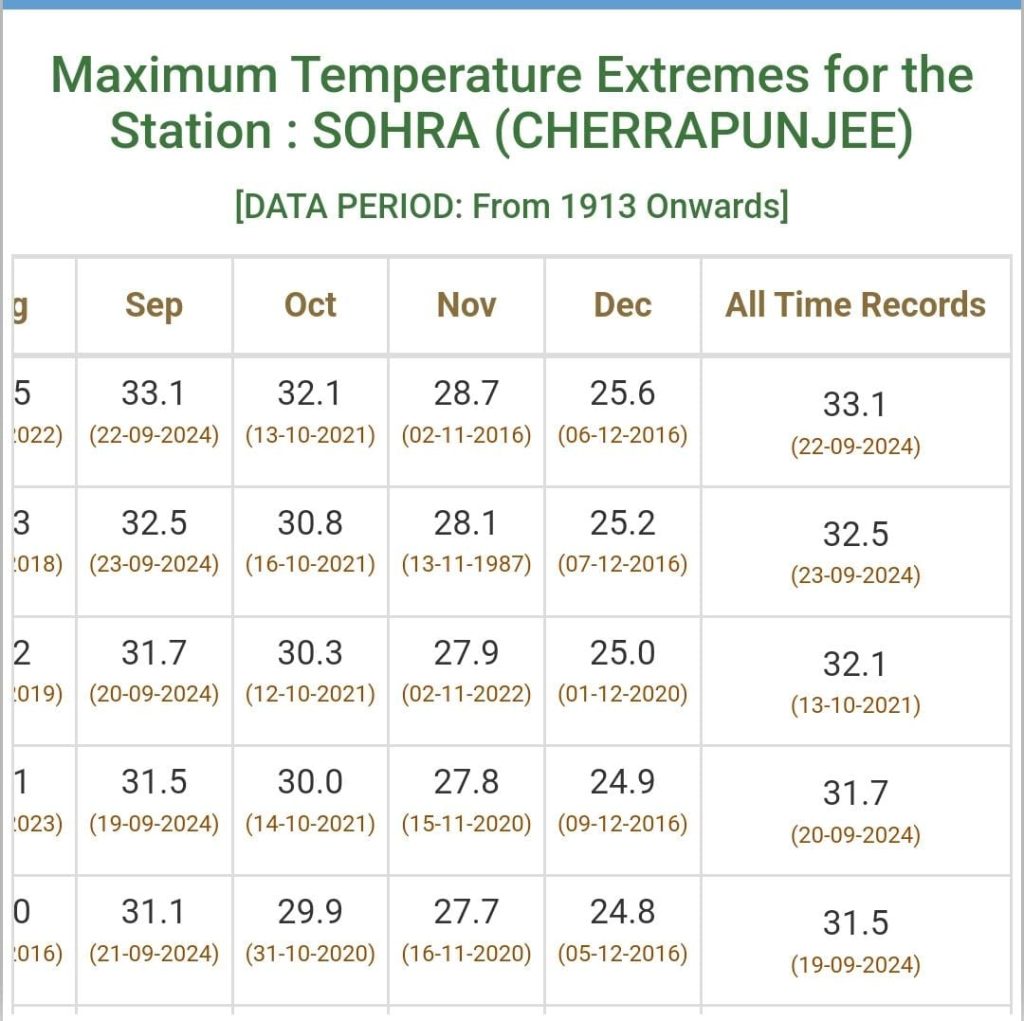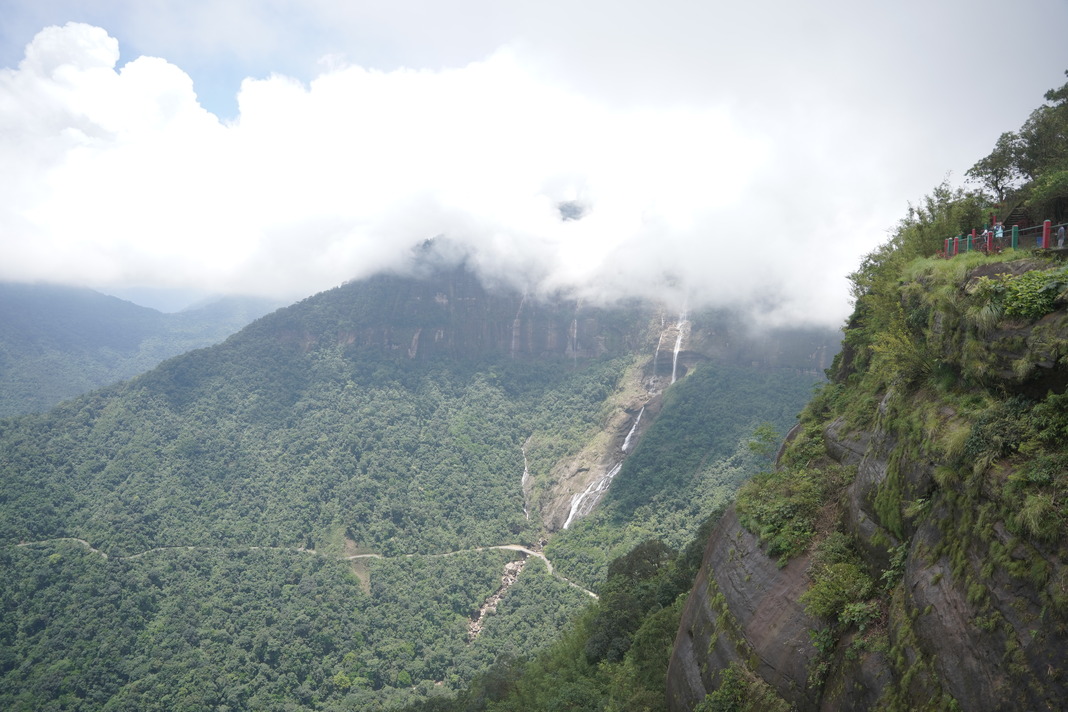By Roopak Goswami
Guwahati, Sept 26: When Sohra recorded 33.1 degrees Celsius on September 22, many did not know that it was the hottest day at one of the wettest places on Earth.
With Sohra witnessing an unsettling transformation in its weather patterns, it may not have made much difference and it went unnoticed.
A senior official at IMD Guwahati said the Meteorological Office at Sohra recorded 33.1 ⁰C on September 22 which is the highest all-time maximum temperature record surpassing the previous highest record of 32.1 ⁰C on October 13, 2021.
Sohra (Cherrapunji) is located at the Southern edge of the stiff mountainous cliffs of Meghalaya in North-Eastern India and is at an altitude of about 4823 feet (1484 m) above the mean sea level. The average temperature is moderate and ranges between 11.6 °C during January (Winter) to 20.6 °C during August (Summer), respectively.
Sohra’s residents, long accustomed to its unique weather, are now grappling with a new reality. The climate changes are affecting the natural landscape, local businesses, and, most importantly, the lives of those who call this place home.
Roger W. Ranee, an Assistant Professor at Don Bosco College, Byndihati, reflects on the weather changes with a heavy heart. “For weeks, the rain never stopped, the fog covered us endlessly, and the winds reminded us of nature’s power. To some, it was scary, but my heart rejoiced in such weather,” he reminisces. However, these once dependable elements have faded, and the professor laments the loss of what made Sohra feel like home. “It’s sad to see that this is no longer happening,” he adds.
For Carolus Shabong, a resident, the decline in rainfall has brought about tangible disruptions. He points to the diminished waterfalls, a symbol of Sohra’s beauty, as a sign of more profound changes. “The natural spring water, once a reliable source for drinking, is depleting, affecting the community’s access to water,” he explains. Additionally, tourism, which thrives on the region’s rainy allure, has taken a hit. “Tourism-related businesses are suffering because the rain isn’t as heavy as it used to be,” Carolus notes, emphasizing how intertwined weather and livelihoods are in the area.
Dephie Ranee, a student from Sohra, expresses a mixture of emotions over the changes. “I feel sad because the earth is drier, angry because it weakens her, and surprised because I have never experienced such heat in Sohra before,” she says. The increasing dryness has led to various challenges for the community, including a growing scarcity of water, rising dust levels, and even heat waves. “Less water is available, and dust is everywhere,” Dephie adds. The rising temperatures are also giving way to health concerns, with more people in the area reporting issues tied to the heat.

The latest study conducted by researchers from the North-Eastern Hill University (NEHU) has revealed significant future changes in the climate of Sohra (Cherrapunji), known for its extreme weather conditions. The study utilizing the Statistical Downscaling Model (SDSM) and data from the Second-Generation Canadian Earth System Model has projected notable increases in both temperature and precipitation in the coming decades.
The study suggests that in the future, precipitation will increase during the monsoons, and the temperature extremes will increase during the winter season. The researchers indicate that Sohra may witness a dry and harsh winter as the precipitation change is negligible and the temperature change is highest during this season in future periods.
“This warming trend is attributed to increased greenhouse gas emissions and aerosol concentrations,” the study said.
Analysis of observed mean annual temperature (maximum and minimum), precipitation, and diurnal temperature range (DTR) was carried out for Sohra from 1979 to 2020 to determine the trend and magnitude of that trend.
Previous studies on climate extremes at Sohra also suggest that the Consecutive Dry Days (CDD) have increased significantly by 0.54 days/year, while the Consecutive Wet Days (CWD) have decreased considerably by 0.36 days/year during the recent period.
Results show that for all the scenarios, the projected maximum temperature will increase every month throughout the year in future periods. The highest change in maximum temperature is shown by January month (2.6-4.3 °C) in all the scenarios during the future. It is observed that the change in maximum temperature increases from March, reaches a peak during July, and then decreases till September. Again, it starts rising in October, peaks in January and goes down till March. This indicates that the summer and winter months will be most affected in the future as the increase in daytime temperature is much higher relative to the other months.
As the earth around them becomes drier and less predictable, the people of Sohra are left hoping for a future where nature’s balance can be restored.




